Recent Water Damage Posts
Why Proper Restoration Matters for Auburn and Enumclaw Homes
11/20/2024 (Permalink)
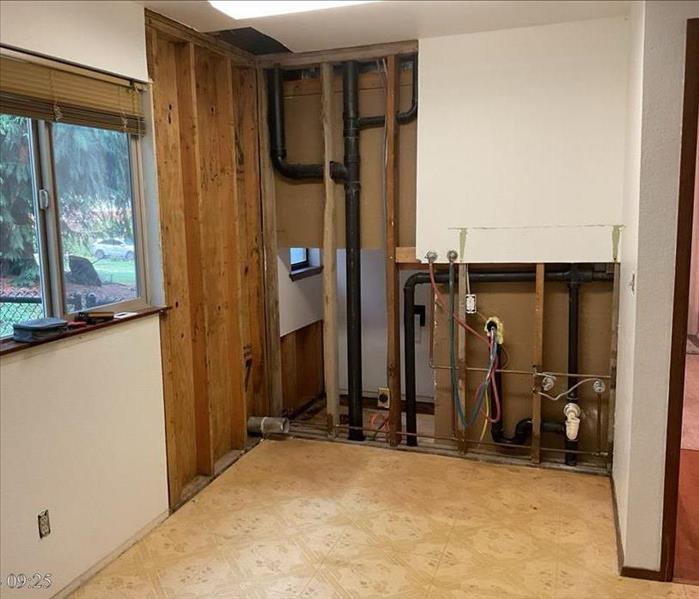 Residential space affected by water damage, in the restoration process.
Residential space affected by water damage, in the restoration process.
Water damage is one of the most common issues property owners in Auburn and Enumclaw face, especially with the rain-prone climate in Washington. When water damage isn’t addressed correctly, it can lead to more severe problems, such as mold growth and structural damage. At SERVPRO of Auburn/Enumclaw, we understand the critical importance of thorough water restoration and are here to help.
Why Proper Water Damage Restoration Is Essential
- Preventing Mold Growth: When water damage isn’t properly dried and restored, lingering moisture can create ideal conditions for mold to thrive. Mold growth can begin within 24-48 hours and spread quickly, posing health risks and causing further damage to your property.
- Protecting Structural Integrity: Excess water can seep into walls, floors, and foundations, weakening the structural components of your property. Over time, this can lead to significant, costly repairs that could have been prevented with proper water restoration.
- Avoiding Secondary Damage: Inadequate or delayed water damage restoration can lead to additional damage beyond the initial event. For example, water left untreated in drywall can spread, compromising adjacent areas and making restoration more complex.
SERVPRO of Auburn/Enumclaw: Your Local Water Damage Experts
Our team at SERVPRO of Auburn/Enumclaw specializes in comprehensive water damage restoration. Here’s what we provide:
- Fast Response, 24/7: Quick action is crucial with water damage, so we’re available anytime to start the drying and restoration process.
- Advanced Equipment: We use specialized drying equipment, dehumidifiers, and moisture meters to ensure your property is completely dry, reducing the risk of mold.
- Trained and Certified Technicians: Our professionals are trained to handle water damage in all its stages, from initial water extraction to complete restoration, giving you peace of mind throughout the process.
When it comes to water damage, choosing a trusted, experienced restoration team is essential to protecting your property. Contact SERVPRO of Auburn/Enumclaw to ensure a thorough, professional restoration that will help prevent further issues down the road.
Auburn/Enumclaw Flood Cleanup!
11/13/2024 (Permalink)
If you’re dealing with a flooded company or home in Enumclaw, WA, you may be wondering if it’s possible to salvage any items located in the structure. You may be relieved to know that as long as the water wasn’t contaminated this should be possible. Here’s what you may need to know.
Items Will Need To Be Cleaned
Any item that has come into contact with the flooding should be cleaned. There are many methods available depending on item type.
• Clothing and cloth items may be washed with hot water
• Dry cleaning is an option for non-washable cloth items
• Sanitizing dips are available for small items
• Furniture and large pieces may be wiped over with a cleaning solution
• Electronics should be looked at by a professional service
Some items May Need To Be Replaced
In the case of a flooded company or home some items may need to be replaced. It's a good idea to look over each piece thoroughly to see if there is any irreparable damage. Fortunately, many insurance policies cover damage to items resulting from a flood, so you may want to talk to your provider when these items are discovered.
A Professional Restoration Company Can Help
If you don’t feel comfortable conducting repairs yourself you may choose to work with a water damage restoration service. Many such companies can help with cleanup, sanitation, repairs, and even help with damages caused to personal items. In many cases, they may also be able to take steps to help prevent future issues.
When salvaging items in a flooded company or home, whether it’s from storm damage, a broken pipe, sprinkler system failure, or other sources, you may be relieved to know that you can save the items and equipment in the building, as well as repair the structure. Remember, each item will need to be cleaned according to its type, and some items may still need to be replaced. Fortunately, a professional team may be able to help with this process.
Ceiling Water Damage in Auburn/Enumclaw: Quick Tips and What to Do
11/5/2024 (Permalink)
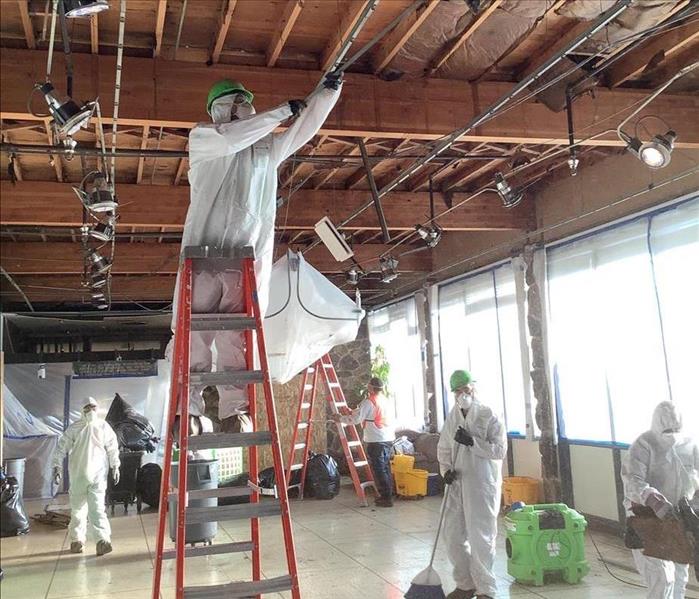 Water Damage Restoration by SERVPRO of Auburn/Enumclaw
Water Damage Restoration by SERVPRO of Auburn/Enumclaw
Ceiling leaks can lead to significant damage in your home or business. Whether caused by plumbing issues, roof damage, or severe weather, acting quickly can help mitigate the impact.
What to Do If You Discover a Ceiling Leak
- Ensure Safety: If you notice water dripping, check for electrical hazards. Avoid the area and turn off the power if necessary.
- Identify the Source: Locate the leak if possible. If you can’t determine the cause, reach out to a professional.
- Contact SERVPRO of Auburn/Enumclaw: Our trained team is available 24/7 to assess the damage, remove water, dry the area, and restore your property Like it never even happened.
Prevention Tips
- Inspect Your Roof: Regularly check for damaged shingles and clear gutters to prevent leaks.
- Maintain Plumbing: Regularly inspect pipes for leaks and address issues promptly.
- Improve Insulation and Ventilation: Proper insulation in attics can prevent condensation and potential leaks.
Why Choose Us?
At SERVPRO of Auburn/Enumclaw, we understand that every water damage situation is unique. Our professional team is equipped to handle everything from water extraction to complete restoration, ensuring your property returns to its preloss condition efficiently. Don’t let a ceiling leak turn into a disaster—contact us anytime for fast, reliable service!
The Silent Threat: How Water Leaks Impact Businesses and What You Can Do About It
3/5/2024 (Permalink)
Water leaks are often overlooked, yet they pose a significant risk to businesses of all sizes. In fact, water leaks are the most common form of loss reported by businesses, and their consequences can be far-reaching. Let's explore the effects of water leaks on businesses and how SERVPRO of Auburn/Enumclaw can help mitigate the damage and minimize downtime.
Water leaks can cause extensive damage to property, including structural damage to buildings, flooring, walls, and equipment. The presence of water can lead to mold growth, compromising indoor air quality and posing health risks to employees and customers alike.
The cost of water damage can be substantial, encompassing repair and restoration expenses, as well as potential fines for non-compliance with building codes and regulations. Additionally, insurance premiums may increase following a water damage claim, further adding to the financial burden on businesses.
Perhaps the most significant impact of water leaks on businesses is the disruption to operations and business downtime. Water damage can force businesses to close temporarily, resulting in lost productivity, missed deadlines, and dissatisfied customers. The longer the downtime, the greater the potential loss in revenue and reputation damage.
At SERVPRO of Auburn/Enumclaw, we understand the urgency of addressing water leaks promptly and effectively. Our team of highly trained professionals is equipped with advanced technology and expertise to handle water damage restoration quickly and efficiently. We offer 24/7/365 emergency response services to mitigate further damage and minimize business interruption.
In addition to water damage restoration, SERVPRO of Auburn/Enumclaw provides comprehensive mold remediation services to address any mold growth resulting from water leaks. Our goal is not only to restore your property to its preloss condition but also to ensure a safe and healthy environment for your employees and customers.
With SERVPRO of Auburn/Enumclaw by your side, you can rest assured that your business is in good hands. Don't let water leaks jeopardize your business's success—contact us today for fast, reliable, and professional water damage restoration services.
Remember, when it comes to water damage, swift action is crucial. Trust SERVPRO of Auburn/Enumclaw to handle the aftermath of water leaks and minimize downtime for your business.
A Comprehensive Guide to Hurricane Preparedness and Recovery
11/1/2023 (Permalink)
As the calendar flips to November, we find ourselves in the last month of hurricane season. it's crucial to remember that while the peak of hurricane activity may have passed, the potential for storms and their aftermath still lingers. This blog post will provide you with valuable information on how to stay safe during this time and what to do if you experience a hurricane or flooding.
Pre-Storm:
One of the most critical aspects of hurricane preparedness is staying informed. Keep an eye on weather forecasts, and if a hurricane or severe storm is expected, monitor updates from reliable sources such as the National Hurricane Center, your local government, and news outlets. Make sure to have a battery-powered weather radio on hand in case of power outages.
Create an Emergency Kit
Having an emergency kit ready can make a world of difference during a hurricane. Include essential items like non-perishable food, water, flashlights, batteries, a first-aid kit, personal hygiene products, and important documents. Don't forget to stock up on any necessary prescription medications and pet supplies if you have pets.
Prepare Your Home
Securing your home is vital to your safety during a hurricane. Reinforce windows and doors, trim tree branches that could become projectiles, and clear your gutters. If you live in a flood-prone area, consider investing in sandbags and flood barriers to protect your property.
Evacuation Plan
If you live in an evacuation zone, be prepared to leave when authorities issue evacuation orders. Have a plan in place for where you will go, and make arrangements for your pets if you have them. It's essential to leave early to avoid traffic congestion and ensure your safety.
Communication
Keep lines of communication open with your family and friends. Make sure everyone knows your whereabouts and how to reach you. Establish a central point of contact in case family members get separated during the evacuation.
Stay Safe During the Storm
During the hurricane, stay indoors and away from windows. If flooding occurs, move to higher ground, and never attempt to drive or walk through floodwaters. The power may go out, so use flashlights instead of candles to prevent fires. Charge your phones and have a portable charger ready to stay connected.
Post-Hurricane Actions:
After the hurricane passes, it's not time to let your guard down. Be cautious of downed power lines, flooding, and debris. Check on your loved ones, especially the elderly and those with special needs. If you evacuated, wait for authorities to declare it safe to return home.
Stay Informed
After the hurricane has passed, continue to stay informed about local conditions and updates. Keep your weather radio or other communication devices handy to receive updates on road closures, emergency services, and relief efforts. This information is invaluable as you assess the situation and plan your next steps.
Contact Loved Ones
Let your friends and family know that you're safe and sound. Keep your cell phone charged and use it to communicate with your loved ones. A simple text message can ease their worries and keep the lines of communication open.
Document the Damage
Take photographs and videos of the damage to your property, both inside and outside. This documentation can be vital when dealing with insurance claims and seeking assistance. Make sure to document any damage to vehicles as well.
Contact Your Insurance Company
Contact your insurance company as soon as possible to report the damage and start the claims process. Be prepared to provide them with the documentation you collected. If you're unsure about your policy's coverage, ask your insurance agent for clarification.
Assess Your Home's Safety
If you're allowed back into your home, assess its safety and the extent of the damage. Secure any openings to prevent further damage, such as covering broken windows and tarping damaged roofs. Take steps to remove water and begin drying out your home to prevent mold growth by calling SERVPRO of Auburn / Enumclaw at (253) 735-2919.
Seek Assistance
If you're in need of immediate assistance, contact local emergency services or relief organizations. They can provide you with information on shelters, food distribution, and medical services. Local government agencies may also provide resources for disaster recovery.
Reach Out to FEMA
In the aftermath of a major disaster, the Federal Emergency Management Agency (FEMA) may offer assistance to affected individuals and communities. Contact FEMA to inquire about the available aid and how to apply for it if you or your family need it.
Begin Cleanup and Repairs
Once your safety is ensured, and you've taken the necessary steps to document and assess the damage, you can call SERVPRO of Auburn / Enumclaw to begin cleaning up and essential repairs. Keep all receipts and records of expenses related to recovery efforts, as these may be important for insurance and assistance claims.
Experiencing a hurricane or flooding can be a challenging and emotional ordeal. However, by following these steps after the storm and calling SERVPRO of Auburn / Enumclaw, you can begin the process of recovery and rebuilding. Remember to stay safe, document the damage, and seek assistance when needed. With the support of your community, the appropriate agencies, and SERVPRO, you can recover from the aftermath of a hurricane and look forward to better days ahead.
Water leaks are the most common business losses
3/8/2023 (Permalink)
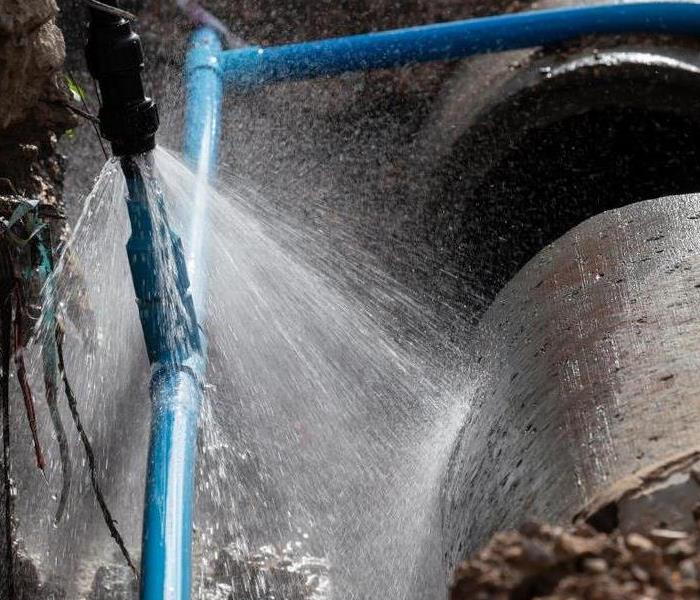 When water damage shuts down your business, give SERVPRO a call for your water emergency.
When water damage shuts down your business, give SERVPRO a call for your water emergency.
Water leaks can be one of the most damaging events to hit a small business. Not only do they cause damage in the short term, but they also affect productivity and have the potential to increase your insurance premiums. In fact, water is the most common cause of small business insurance claims and has been for decades.
The most common business loss is water.
Water leaks are the most common business loss. They can be caused by a variety of things, including broken pipes and flooding. The second-most common cause of water damage is from roof leaks.
The best way to prevent these losses is through regular maintenance and inspections by a professional plumber or contractor who knows how to identify potential problems before they become serious issues.
Water leaks are the leading cause of small business insurance claims.
Water damage is the most common business loss, but it's also one of the hardest to prevent. Leaking pipes are the leading cause of water damage and can be hard to find if you don't know what you're looking for. If you have a leaky pipe, there are ways to find it before it causes major problems in your building. Look for wet spots on floors or walls. These could indicate that there's a leak somewhere nearby.
Check any faucets on sinks or bathtubs periodically, if they're dripping slowly instead of flowing freely, this could mean that there's an issue with your plumbing system that needs attention soon!
Water damage costs small businesses.
Water damage is one of the most common business losses, and it can cause significant damage to your business. Water can spread quickly through your building and cause thousands of dollars in damage before you even realize what's going on.
Keep track of all leaks and make sure they're repaired quickly. This will help to prevent water damage from spreading further into the building or causing further damage to equipment or furniture within the area where it's occurring.
Keep up with maintenance checks so that any problems that do arise are fixed before they become bigger issues (such as burst pipes).
A leaking pipe.
One of the most common business losses is water leaks. A leaking pipe can cost you more in lost productivity than the cost of fixing it. The cost of lost productivity can be hard to quantify, but it's often significant and sometimes greater than the cost of fixing a leak itself.
SERVPRO of Auburn/Enumclaw is available 24/7 for your restoration emergency in your home or business. Our team is trained in water restoration and can get your business back up and running as quickly as possible.
Washing Machine Tips to preventing a Water Loss
1/12/2023 (Permalink)
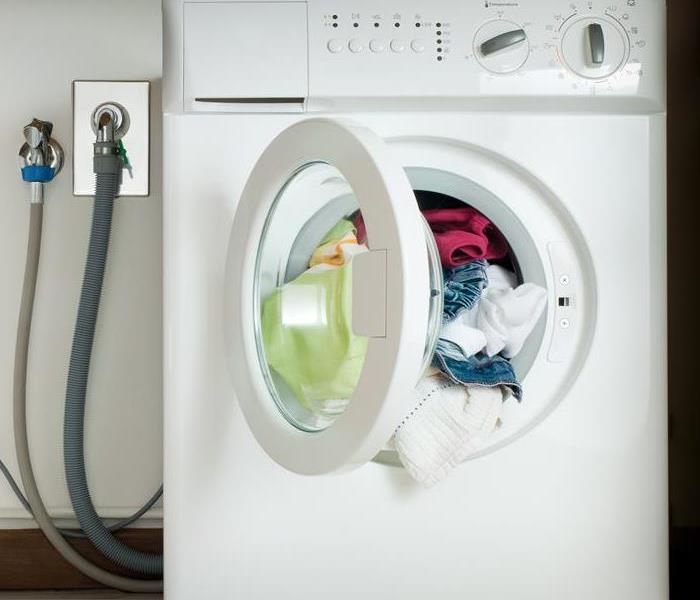 Check your washing machine for leaks
Check your washing machine for leaks
If you're a homeowner, your washing machine is an essential appliance that you likely use on a daily basis. Unfortunately, if you don't take care of it properly, it can cause major damage to your home. Whether that means flooding your house due to faulty drain hoses, or mildew build up inside due to not cleaning up after use. This guide will help keep washing machine disasters from happening at home.
Faulty Drain Hoses
Check the drain hose for kinks, obstructions and cracks. If the drain has the least bit of wear and tear it is safe to replace to prevent any damages from happening in the near future.
Replace the drain hose if you find any of these problems immediately.
Don't overload your Washer
- Don't overload your washer. The more laundry you try to cram into the washing machine, the more likely it is that something will get caught and tear up your clothes or cause damage to other items in your laundry room.
- Don't put objects in the washer that are too heavy. This includes stuffed animals, pillows and blankets, large towels and sheets (which can weigh as much as 10 pounds), sheets with metal hooks attached (like hospital-grade bedding) and anything else that might damage your machine if it gets stuck inside while it’s running.
- Don't put clothes in the washer that are too large or small to fit through the opening of your washer door when closed; otherwise they may get tangled up before reaching their designated cycle at all! Also avoid putting any clothing with sharp edges or corners into a top-loading machine since these items could puncture holes in inner drum walls over time. This can eventually lead them to leaking out onto floors below once washed regularly under hot temperatures conditions like those found inside modern home spaces here today.
Check the seal to your washer door.
- Check the seal to your washer door. Keep the seal clear of debris and water build up can prevent the seal from breaking leaving your washer out of order.
- If you find a leak, replace the seal immediately to prevent a water loss.
- The brand and model of your washing machine will determine how to correctly install a new seal.
You should be able to make your washing machine last for many years if you take care of it. You can avoid many issues by making sure that the drain hose is not kinked, overloaded or damaged. You should also check the seal around the door to ensure that it's working properly so no water can leak out from there either.
How to Determine Kitchen Water Damage
1/9/2023 (Permalink)
 Listen for drips and leaks
Listen for drips and leaks
How to Determine Kitchen Water Damage
You wake up in the morning to find your kitchen counters covered with water and you think, "Oh no! Something's wrong with the plumbing.” Then you realize that a pipe under the sink has burst, but this can happen all the time! Here are some ways to tell whether your kitchen has actually been damaged by water:
Wet Cabinets
Look for wet spots on the wall, baseboards and flooring. Check the ceiling for stains (check under kitchen cabinets too). Look inside the sink and dishwasher. If you can't find any obvious signs of water damage, inspect your refrigerator by removing its kick plate or looking underneath it with a flashlight.
Leaking Appliances
Leaky appliances are an obvious sign of water damage. If your dishwasher or refrigerator were to start leaking, a mess would quickly develop around the appliance and could cause extensive damage. If you're noticing a leak from any of these appliances, stop using them immediately and call for professional assistance. The same goes for any other type of leaking appliance—including hot water heaters, faucets, and more—that may be leaking into your kitchen.
Drips and Leaks
- Listen for drips and leaks. The first step to determining if you have water damage is listening for the source of the leak. If you hear dripping or running water in your kitchen, investigate where it is coming from and see if there is any type of leak that can be fixed with a quick repair job.
- Look for drips and leaks. If you cannot find the source of a drip or leak by listening for it, then move on to looking at your kitchen cabinets and drawers for signs of damage caused by water intrusion such as cracks or holes in woodwork; peeling paint; warped wood doors; warped cabinet panels; bubbling paint cans used on countertops under sinks (this means there was standing water at one time); discoloration on surfaces near plumbing fixtures like faucets or dishwashers (again indicating standing water).
- Feel for drips and leaks. Sometimes it isn't easy to detect a drip or leak just by looking around because they may not be visible from every angle so take advantage of all senses including touch! Get down low where possible floors creak beneath my feet whenever I walk across them because my weight shifts causing vibrations that are magnified upon hitting those boards hard enough that they make noise when struck against something else like another board nearby making it vibrate until we reach equilibrium again.
Signs Your Kitchen Has Water Damage
You probably don't realize that your kitchen has water damage until it's too late. It's not uncommon for leaks to appear in the ceiling or walls, causing mold growth and structural damage. If you notice any of these signs, it's time to call in an expert:
- Leaks or stains on the ceiling
- A damp smell in the air (or a musty smell)
- Mold growing on walls or ceilings
If you’re experiencing water damage in your kitchen, it’s important to know what to look for. If you see any of these signs, contact a professional right away to assess the situation and determine whether or not there is damage.
What to Do When Water is Dripping from Your Light Fixtures
11/3/2022 (Permalink)
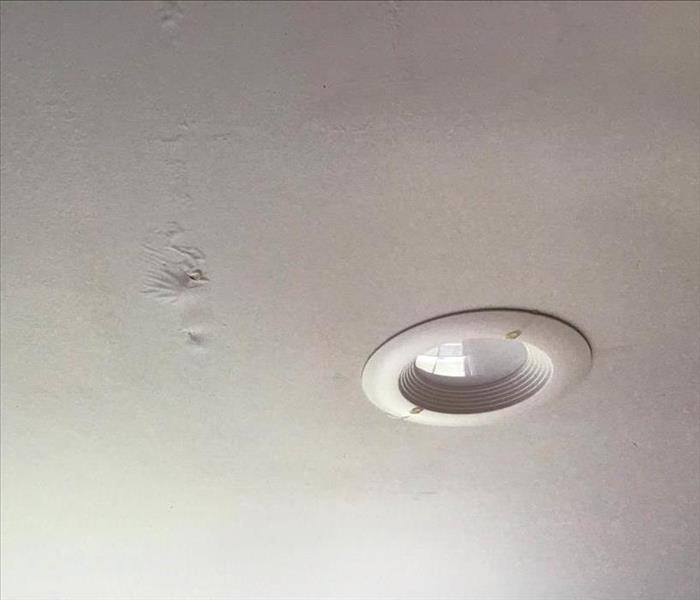 Hire a professional if you have a water leak from your light fixture.
Hire a professional if you have a water leak from your light fixture.
What to Do When Water is Dripping from Your Light Fixtures
We've all been there—the first spring rainstorm pours down, and you realize that a pipe in your ceiling has sprung a leak. First of all, don't panic. The good news is that most leaks are pretty easy to fix. The bad news: They can be expensive and time-consuming, especially if the source of the problem is something as complex as an ice dam or other roofing issues. But with some basic knowledge about what kinds of leaks occur and how to detect them, you can make sure that your home stays dry (and dry-looking) for years to come!
Check You Ceilings
If you see evidence of water damage—water stains, discoloration, or mold—on the ceiling, you likely have a leak that needs to be repaired. Hiring a professional to fix the problem is your best bet for resolving the issue and getting it back in working order.
Another Source of Leaks
You may have an ice dam that formed on your roof when the snow melted and refroze on the eaves of your house. The water backs up and causes leaks inside the ceiling. If you find a leak, it will be difficult to identify if this is the case because there won't be any standing water or puddles outside of your home.
Turn the Electricity Off
Before you do anything else, call your electric company to turn off the power to your Auburn, WA home before you start investigating leaks. The last thing you want to do is work on electrical wires or cords if you are not qualified, and in this case, it's imperative that someone who knows what they're doing take a look at the source of any leaks before moving forward with repairs. If a professional electrician isn't available immediately, wait until one can get there before continuing any work yourself. You should also turn off all lights in rooms where leaks have been found so as not to accidentally create an unsafe environment for yourself or others. As you may know, water and electricity don’t mix, so you want to avoid being around the two together for your own safety.
Call SERVPRO— Your Local Professionals
If you’re not sure what to do and cannot identify the source of the leak, it might be best to contact SERVPRO of Auburn/Enumclaw they can inspect your home for leaks and fix any problems that they find. They will also be able to diagnose problems with your plumbing or roofing systems before they worsen and become more costly to repair.
Pipes can get clogged, but they don’t have to cause you stress. If you notice water leaking into your home or hear strange sounds, it may be time to call your insurance agent, a plumber, and a professional restoration company like SERVPRO! We hope this article has given you some helpful tips and advice on how to deal with frozen pipes. Good luck!
Tips for Troubleshooting Your Irrigation System
9/17/2022 (Permalink)
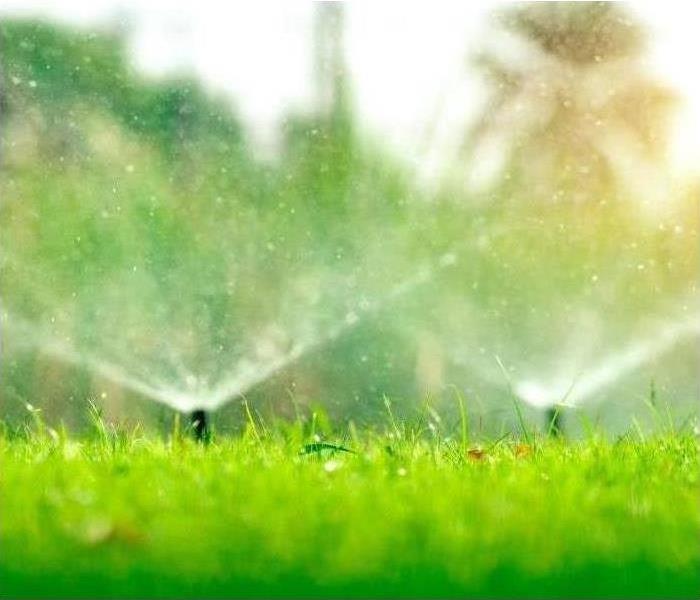 Keep your irrigation system in top working condition by following these troubleshooting tips.
Keep your irrigation system in top working condition by following these troubleshooting tips.
Follow These Troubleshooting Tips
When your commercial irrigation system in Enumclaw, WA, works well, it keeps your lawn and landscaping green and plush. If something in the system breaks down, however, it can cause costly problems. Fortunately, there are some smart troubleshooting tips to keep your system working as intended.
1. Inspect Sprinkler Heads
Sprinkler heads are damaged by lawn mowers, vehicles and foot traffic. Check each head periodically for breakage or missing features, and make sure they pop up properly. Remove dirt and debris, and replace any missing sprinkler heads right away.
2. Look for Leaking Around the Sprinklers
Zone valves within the irrigation system can become dirty or damaged over time, preventing the valves from closing all the way. Remove the valve and clean it thoroughly. If it is broken, replace it promptly.
If the leakage isn’t handled right away, water can begin to pool in areas on the lawn. Surface water can drain into the building causing serious water damage. If this occurs, call a water repair service as soon as possible to investigate the damage and determine a plan of action.
3. Check for Low Water Pressure
If you notice that water only trickles out of a sprinkler, you most likely have low water pressure. There are a couple of reasons this may occur.
The least serious of the irrigation problems could be that the backflow device’s water valves may not be fully turned on. If that doesn’t solve the problem, there may be a pipe leaking somewhere in the system. At that point, it is best to call an irrigation repair service to inspect the entire system.
4. Look for Sprinkler Zones That Don’t Turn On
Generally, this is caused by faulty electrical signals between the valve solenoids and the controller. Someone with professional electrical training should inspect the system and fix the problem.
Keep your irrigation system in top working condition by following these troubleshooting tips.
3 Ways To Clean Items After Flooding
8/25/2022 (Permalink)
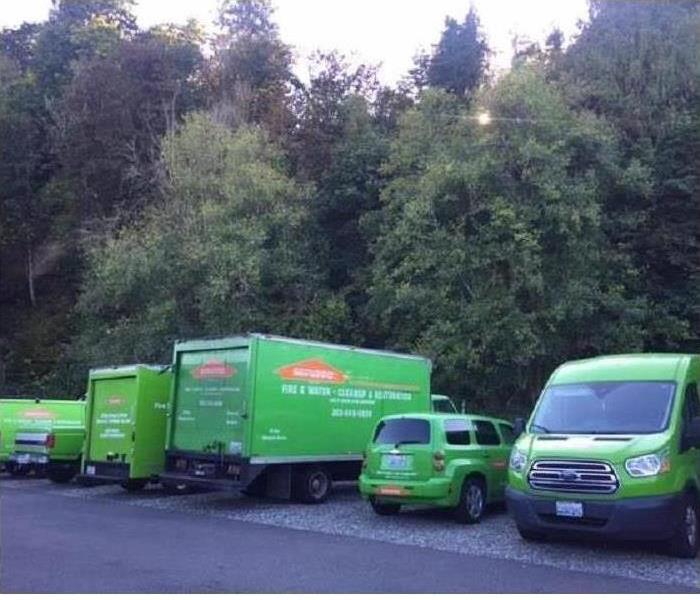 If you have water damage in your home, call SERVPRO
If you have water damage in your home, call SERVPRO
After A Flood, There Are Three Ways To Clean Your Belongings.
If you’re dealing with a flooded company or home in Enumclaw, WA, you may be wondering if it’s possible to salvage any items located in the structure. You may be relieved to know that as long as the water wasn’t contaminated this should be possible. Here’s what you may need to know.
Items Will Need To Be Cleaned
Any item that has come into contact with the flooding should be cleaned. There are many methods available depending on item type.
• Clothing and cloth items may be washed with hot water
• Dry cleaning is an option for non-washable cloth items
• Sanitizing dips are available for small items
• Furniture and large pieces may be wiped over with a cleaning solution
• Electronics should be looked at by a professional service
Some items May Need To Be Replaced
In the case of a flooded company or home some items may need to be replaced. It's a good idea to look over each piece thoroughly to see if there is any irreparable damage. Fortunately, many insurance policies cover damage to items resulting from a flood, so you may want to talk to your provider when these items are discovered.
A Professional Restoration Company Can Help
If you don’t feel comfortable conducting repairs yourself you may choose to work with a water damage restoration service. Many such companies can help with cleanup, sanitation, repairs, and even help with damages caused to personal items. In many cases, they may also be able to take steps to help prevent future issues.
When salvaging items in a flooded company or home, whether it’s from storm damage, a broken pipe, sprinkler system failure, or other sources, you may be relieved to know that you can save the items and equipment in the building, as well as repair the structure. Remember, each item will need to be cleaned according to its type, and some items may still need to be replaced. Fortunately, a professional team may be able to help with this process.
Anyone Can Fix a Leaky Toilet With These 4 Steps
4/4/2022 (Permalink)
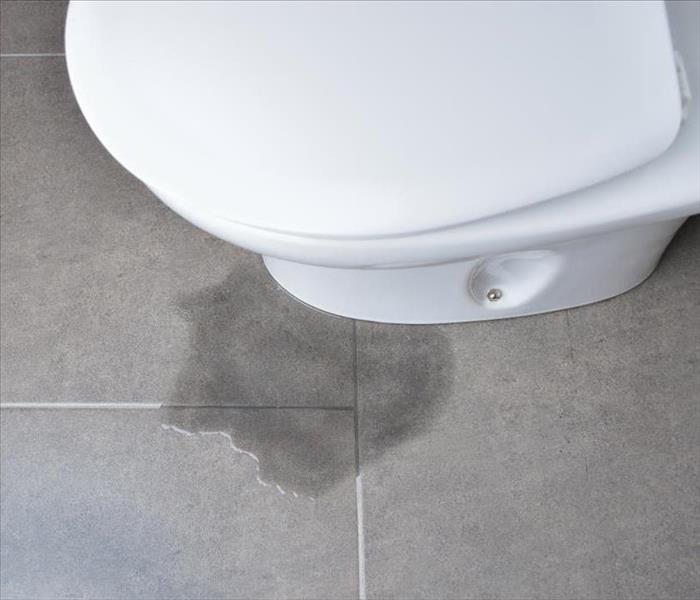 SERVPRO is highly trained and experienced in water damage cleanup and restoration and we are always here to help, no matter the day or hour.
SERVPRO is highly trained and experienced in water damage cleanup and restoration and we are always here to help, no matter the day or hour.
With These Four Steps, Anyone Can Repair A Leaking Toilet.
As a homeowner in Auburn, WA, you will encounter plumbing issues at one time or another and need to make repairs. Many problems require a professional to handle the job, but fixing a leaking toilet is something nearly everyone can do themselves if they follow a few easy steps. The most important thing is to address the leak right away before it causes any damage to your home.
1. Find the Source
Before you begin repairing the problem, you need to know what's causing it. Often, the wax seal at the base of the toilet is to blame. Other times, it could be that it's an old toilet and wasn't installed properly. If you're lucky, you may just need to tighten the tank or fix the tank flange with a repair strap.
2. Get Rid of the Water
Turn the water off with the valve at the back of the toilet and flush your leaking toilet to empty the bowl and tank. You may need a cup to scoop out the rest of the water or soak it up with a towel. Next, disconnect the water supply tube at the base of the toilet.
3. Take the Toilet Off
Now, gently rock the toilet back and forth to loosen the seal and set it down on its side. You're already more than halfway through your toilet repair!
4. Install a New Gasket and Put the Toilet Back On
You should be able to easily scrape the old gasket off the flange and set a new one in its place. Put the toilet back on, making sure to press it down firmly to create a seal with the new gasket. Tighten the bolts, press down again and tighten the nuts before replacing the caps. All that's left is to reconnect the water supply tube, turn the water valve back on and flush the toilet to make sure there are no leaks.
Repairing a leaking toilet can be as simple as following these four steps. However, if the leak stems from a more complicated issue, you may need to call a plumber or a water damage specialist if the damage is extensive.
5 Steps To Replace Your Leaky Toilet
3/2/2022 (Permalink)
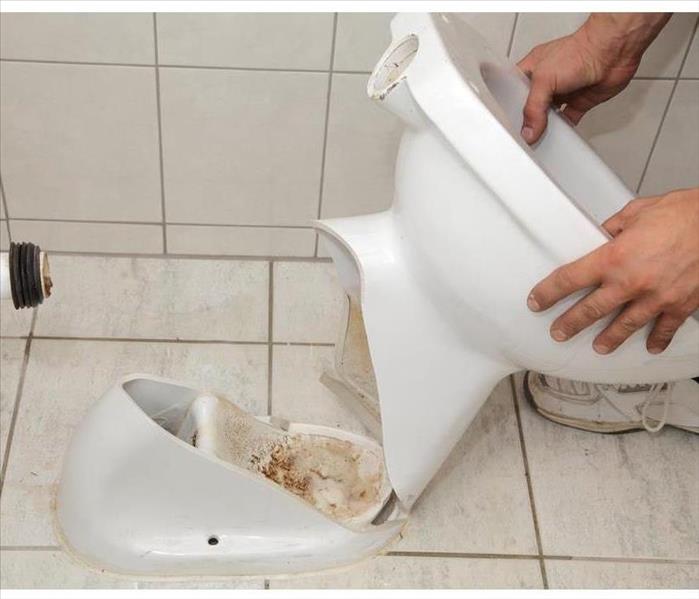 If you have water damage in your home, you can count on SERVPRO, we offer our cleanup and restoration services around the clock, 7 days a week
If you have water damage in your home, you can count on SERVPRO, we offer our cleanup and restoration services around the clock, 7 days a week
Replace Your Leaky Toilet in 5 Easy Steps
Toilet repair or replacement is an important part of home maintenance. A leaking toilet can waste gallons of water each day, meaning that your money is going down the drain, too. Leaks can also cause serious and costly water damage. If your toilet in Black Diamond, WA, is leaking, following these steps to replace it can save you money and help you avoid further issues.
1. Drain the Water From the Toilet
Shut off the water supply valve, which should be located on the left side of the toilet. Flush the toilet to drain most of the water out of the bowl and tank. Any remaining water will need to be removed with a sponge or mop. The supply line at the base of the tank should also be disconnected.
2. Remove the Leaking Toilet
Loosen the bolts at both sides of the old toilet and then remove all nuts and washers. Carefully lift the toilet straight up and place it on a drop cloth or other protective surface to avoid staining your floor. Clean any remains of the wax ring or putty from the floor.
3. Install the Wax Ring
Center the new wax ring and press firmly to ensure that the gap between the floor and the toilet is completely sealed. Be careful to avoid damaging the wax ring, as it will not function properly if deformed.
4. Assemble the New Toilet
Begin with the bowl, placing it over the drain and then add the tank. You may need to gently rock the toilet to place it firmly on the wax ring. Install and tighten nuts, bolts and washers, and attach the toilet seat and lid.
5. Test Your Work
Turn the water supply back on, and flush the toilet to ensure it is working correctly. Check carefully for any leaks.
If you prefer, you may also call a professional to replace a leaking toilet. If you discover or suspect water damage, contact a residential restoration specialist to safely resolve problems.

 24/7 Emergency Service
24/7 Emergency Service









